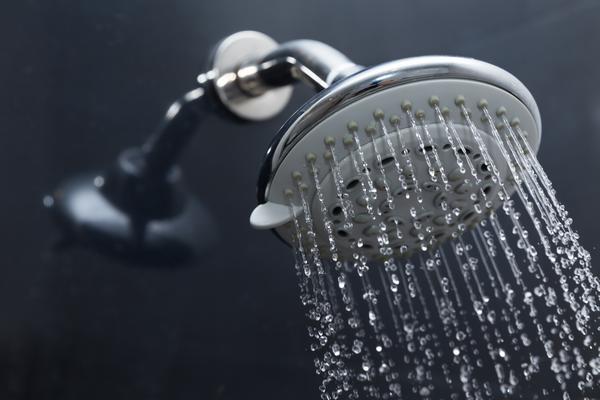Frequent Hurdles in Acrylic Bathrooms and Practical Remedies
Frequent Hurdles in Acrylic Bathrooms and Practical Remedies
Blog Article
Just how do you actually feel on the subject of Hiring a Plumbing Expert?

Polymer bathrooms, shower trays, and various other acrylic washroom ware have actually become much more typical in shower rooms in current times. Not as long lasting as well as stylish as enamel and porcelain bathrooms as well as fixtures, they are extra budget friendly and offer rather a lot the exact same basic function. Some typical examples of damages to acrylic washroom fixtures include staining, cracks, holes, and so on.
Damaged shower or bath surface
Polymer bathroom components are not abrasion-resistant like enamel selections. Being an extremely soft material, acrylic scratches can also be hidden without finish or filling. For these, you must seek expert assistance for your bathroom fixings.
Chemical Reactions
In some cases, individuals attempt to repaint the whole surface of their acrylic bathroom on their own either since they do not like the shade to conceal imperfections. When they do not like the outcome, they apply paint eliminators. You should never utilize paint eliminator on acrylic baths. Although paint cleaners do not respond with the surface of steel bathrooms, they destroy acrylic bathrooms irreversibly. This creates much more benefit the expert. The very best course of action below is to call a specialist for help with changing the bath.
Bath Discoloration
With prolonged usage of acrylic bathrooms comes discoloration or staining. While some spots can be gotten rid of conveniently, utilizing special chemicals, others require that the bathroom be resprayed. Aromatherapy oils loosen the dirt in some instances thus recovering the bath to its former glory.
Fractured Polymer Baths
The life-span of acrylic and fiberglass bathrooms is up to 15-20 years for shower pans and also bathrooms, usually. Splits in an acrylic shower tray are probably among the simplest issues to repair for a fixing specialist. This is the exact same for PVC, material, and also other such materials.
Polymer bathrooms, shower trays, and various other acrylic washroom ware have actually become much more usual in bathrooms in recent times. You must never ever use paint cleaner on acrylic bathrooms. Paint removers do not respond with the surface area of steel bathrooms, they destroy acrylic bathrooms irreversibly. With prolonged use of acrylic baths comes discoloration or staining. The life-span of acrylic and fiberglass baths is up to 15-20 years for shower pans and baths, generally.
How to clean Acrylic shower
USE THESE NON-ABRASIVE CLEANERS
We recommend that you clean your acrylic bathing product made of Delta ProCrylic or Acrylic with Innovex Technology with non-abrasive soaps and cleaners, such as:
Dishwashing detergent Power Bathroom Cleaner CLR Bath & Kitchen Cleaner Formula 409 All-Purpose Cleaner Iron Out Rust Stain Remover When it s time to clean, always use a terry cloth towel, soft cloth or sponge to avoid scratching the acrylic surface. Don t use abrasive scrubbing pads, steel wool or sponges, cause permanent damage to the acrylic material. If you use a drain cleaner or clog remover, be sure to rinse thoroughly with water so no product is left standing near the drain.
Some chemicals and cleaners may deteriorate acrylic surfaces, causing cracks and, potentially, property damage. To avoid this, don t use cleaning products that state on their label that they are not suitable for use on Acrylic, ABS, Polystyrene or Plastic. Be sure to check the label of any product before you apply it to the surface; it s easier to avoid damage than to try to remedy it.
DO NOT USE THESE CLEANERS
Chemicals we do not recommend using to clean acrylic showers/tubs:
Solvents (turpentine, lacquer thinner, mineral spirits, paint thinner, MEK, xylene, acetone, naphtha, etc.) Simple Green All-Purpose Cleaner Pine-Sol Original Scrubbing Bubbles Cleaner Tilex Bathroom Cleaner The Works Tub & Shower Cleaner Lysol with Hydrogen Peroxide Multi-Purpose Cleaner Windex Vinegar Multi-Surface Cleaner Sealant Application Tips
When you re ready to apply sealant, a little planning goes a long way. Pick up some painter s tape and use it to mask off the seam to help make cleaning up easier. When you re applying the bead, use a constant, steady speed to avoid an uneven finish. Use a caulk tool or a plastic spoon to work the sealant into the joint. Wetting the tool with denatured alcohol will help create a smooth finish. Follow the directions on the back of the tube for cure time.
Certain chemicals and cleaners may deteriorate acrylic surfaces, causing cracks and, potentially, property damage. After you re finished applying it, clean up the product surface and remove any excess sealant with denatured alcohol. Don t use solvents (turpentine, lacquer thinner, mineral spirits, paint thinner, MEK, xylene, acetone, naphtha, etc.) that can wreak havoc on an acrylic surface.
With a little care and consideration, you can prevent damage to your acrylic shower or tub. Keep a supply of soft cloths handy and remove any damaging products or abrasive scrubbing items from the bathroom to ensure they aren t around when it s time to clean.
https://www.deltafaucet.com/design-innovation/inspiredliving/how-to-clean-acrylic-shower

I ran across that piece on 6 Things to Know About When Hiring a Plumbing Services while doing a lookup on the web. Sharing is caring. Helping people is fun. Thank you for your time. Visit us again soon.
Book Inspection Report this page